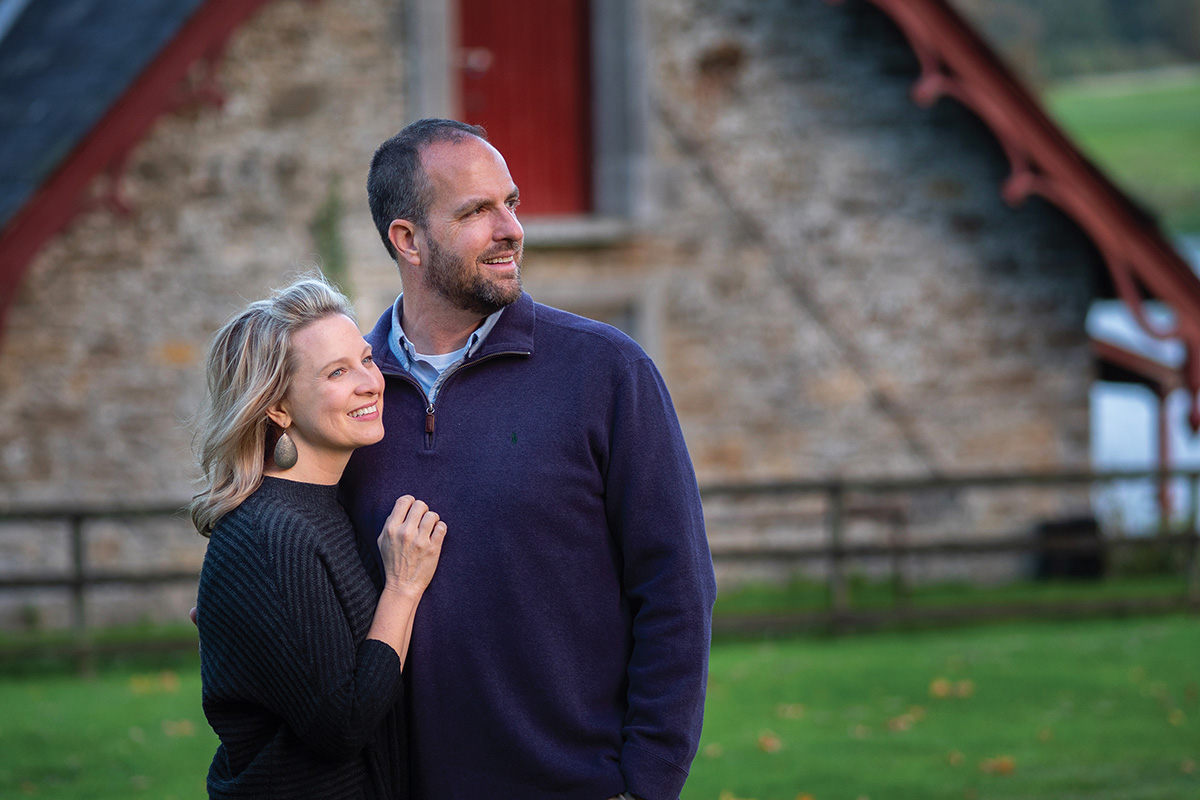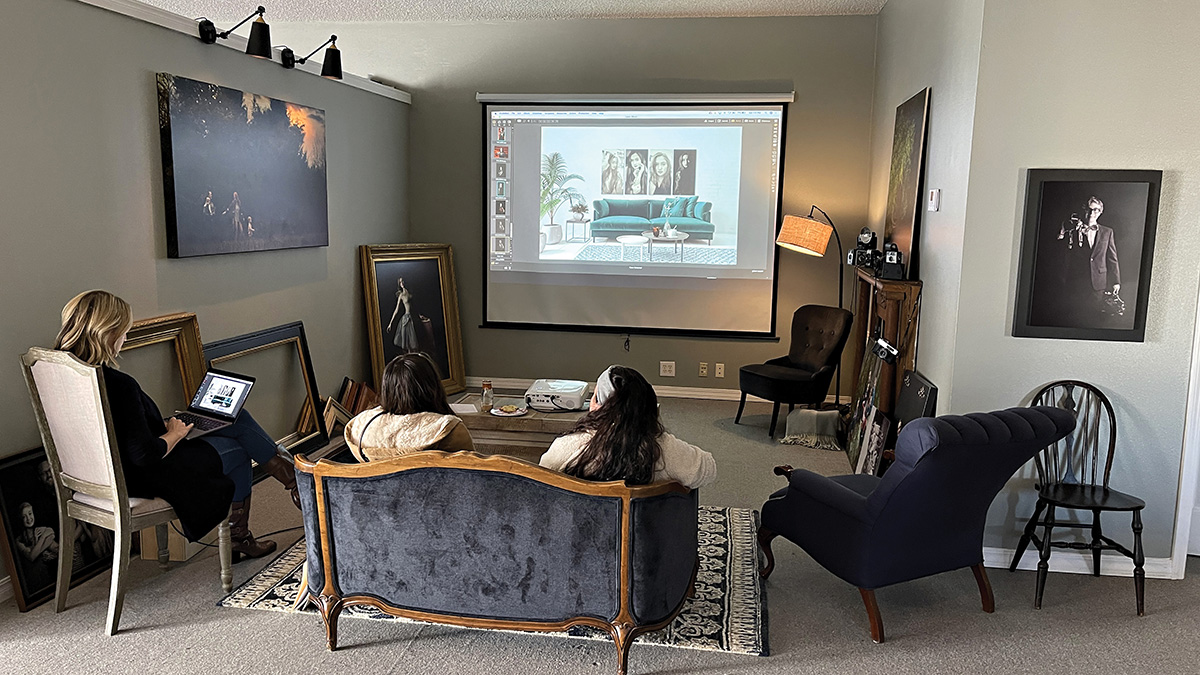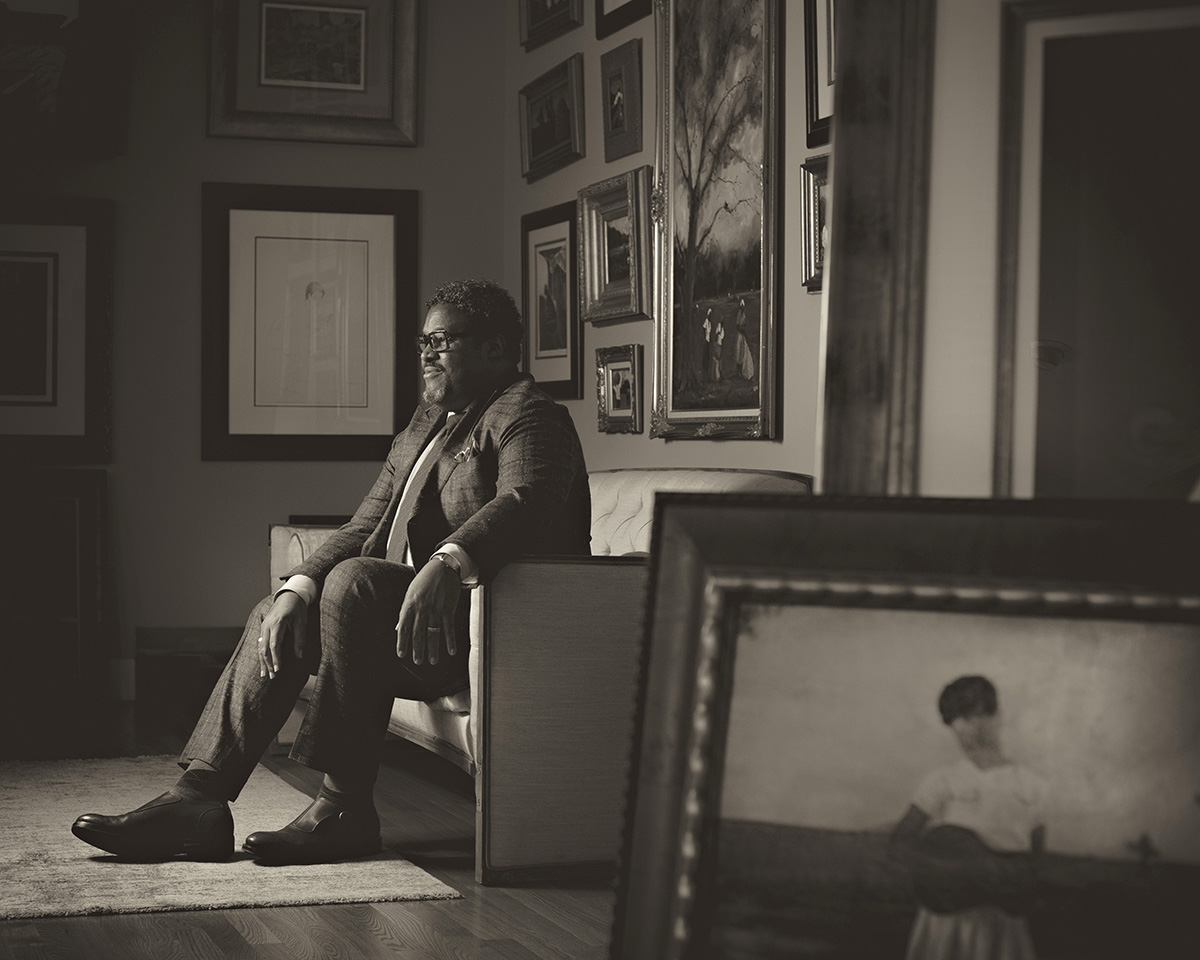
When Whitney and David Scott decided to go all in on photography, their move was based on little more than a leap of faith. The revenue their business was generating was not great. Still, Whitney, a former counselor, and David, a youth minister, believed enough in themselves and the quality of their work to go for broke.
And they very nearly went broke. At the time that David retired from youth ministry and joined the photography business full time, Whitney was paying herself just $500 a month from photography. She’d been working part time in photography for several years since the birth of their daughter, doing family and child portraits near their home in Joplin, Missouri. She conducted sales by sharing a little price book with clients and letting them order at their convenience. The sales timeline was entirely up to the clients, and in the absence of any strategic sales process, she was thrilled to land a $100 sale.

Whitney and David Scott
Money was tight, and though they were able to bump up their sales averages to a few hundred dollars, the revenue wasn’t enough to justify both of them working full time in the business. When they viewed presentations from successful portrait photographers selling packages for thousands of dollars, it seemed inconceivable they could one day reach that level. They knew they needed to make changes.
Then Whitney and David attended a business workshop by former PPA President Ann Monteith, M.Photog.Hon.M.Photog.Cr., CPP, ABI, API, A-ASP. Primary among the many lessons they learned was the need to take control of their sales process. The Scotts had been doing in-person sales, sort of, but had ceded control of the process to clients. There was no sense of urgency and no customization of the image options, no presentation using projection software or other tools.
“We quickly saw that immediacy was important when it came to our sales,” says Whitney. “Our style of photography draws out emotion, and when our clients see their images for the first time, there’s an emotional impact. It’s important for us to be there, guiding them to make the right choices. On the other hand, when they sit with the images for a while and don’t have that artistic guidance, some of that enthusiasm wears off.”

Ready for a sales session in the Whitneys’ studio
THE OVERHAUL
The Scotts invested in projection sales software and overhauled their sales process, getting much more hands-on and making the experience more curated and customized for each client. Their first sale after using the new process paid for the software, and their sales average doubled overnight. Before long, they were averaging $2,500 per order, an impressive feat in an area with a median income hovering around the $40,000 mark.
It wasn’t just a change in the sales process. The Scotts recognized they needed to adapt their approach from top to bottom. This started with the understanding that clients want to be catered to and need consultation and advice throughout the process.
“Our clients have no reference point for what to expect when they come to us for the first time,” says David. “So, we want to pull back the curtain, show them the process, and build a sense of familiarity. We are careful with the language we use, and we try to help them feel very comfortable about their decisions. We are on this journey together with them, but we are not leaving everything entirely up to them.”

THE PROCESS
Whitney kicks off the process during the prospective client call, during which she dives deep into their preferences, expectations, and experiences with other photographers. If the prospect is a good fit, she’ll schedule an in-person consultation at the client’s home. The consultation is almost like an interior design service. Whitney takes pictures of areas of the home, loads them into the sales software, and discusses options for using wall art in those areas. This creates anchor points so the client can envision the artwork in their home. Hopefully, that idea will be so strong they’ll feel something is missing until they purchase and hang the images.
By talking about prices at the consultation stage, clients understand the cost of various options prior to the sales session. The Scotts are careful to provide context for prices and offer justification for the investment.
“These consultations elevate the trust level with the client,” says Whitney. “We make recommendations, but it’s not all about sales. Our job at this stage is to educate. We’re just giving information, and that removes a lot of the pressure on everyone.”
Following the consultation, the Scotts schedule the actual portrait session and then invite clients back to the studio one to two weeks later for proofing and purchasing. The purchasing session is a very relaxed atmosphere. Later, David delivers and installs the artwork in their home as a complimentary service.
“We are not doing our clients any favors by offering too many options. Part of our job is to curate what we know they’ll love and what will work best. Then they are able to order quicker and more confidently.”
Whitney Scott
MANAGEABLE CHOICES
Increasing their sales average was inspirational, but the Scotts saw potential to reach an even higher level in sales and service. Getting there didn’t happen in one giant leap but through a series of incremental increases. To facilitate the rise, the Scotts dialed in their product offerings to a very tight pricing structure without any loopholes. That meant raising prices and also determining which products to continue and which to let go.

Whitney remembers when she used to show clients an enormous hardbound pricing book with an overwhelming list of options. “We discovered that clients don’t want to make a decision until they have reviewed all the options, and that gets overwhelming when there are too many choices,” she says. “We are not doing our clients any favors by offering too many options. Part of our job is to curate what we know they’ll love and what will work best. Then they are able to order quicker and more confidently.”
Whitney and David established product offerings in sets of three (good, better, best) with the understanding that most clients would choose the middle tier, where there is the highest perceived value. After each sale, the Scotts evaluated it, figuring how they could duplicate things that went well and modify things that weren’t as successful. They tweaked pricing and constantly looked to move each client, each session, to the next level. With each increase in pricing came a corresponding improvement in the overall experience they’d provide.
“The sale happens when the value you’re providing is higher than the price,” says David. “If you can increase the perceived value, then the sky’s the limit for what you can charge.”
Today, after moving to Bentonville, Arkansas, the Scotts have continued to boost prices steadily, bumping up the studio’s average sale to over $5,000, which is again more than double where they were just a few years ago.

PURCHASE INCENTIVES
The Scotts want to sell wall art. They talk about it with clients, they shoot with that objective in mind, and they present images for specific wall spaces so clients can see real-world examples of what they’re going to buy.
However, after clients have selected images for wall art, there are additional images they often don’t want to give up. Those images represent easy additional sales when they’re paired with the right products to incentivize multiple purchases. For example, the Scotts offer albums and folio boxes as options for additional images, and they include digital image files with certain product purchases. All products are sold a la carte, and everything is designed to incentivize multiple purchases with pairings and bonuses for each additional selection. The goal is to provide clients with more of what they want while giving the Scotts a sales average that reaches their goal.
Knowing that goal is important. “When working out pricing, begin with the end in mind,” suggests Whitney. “You need to know what your average should be. You need to know what an acceptable minimum sale should be. And you need to know what items can be combined to meet those goals. Then you can guide the sales process so that everyone is happy. The greatest feeling is when the client cuts you a big check and then gives you a big hug to say thank you. That’s when you know it’s all working.”
Jeff Kent is the editor-at-large.
Tags: in-person sales pricing sales
